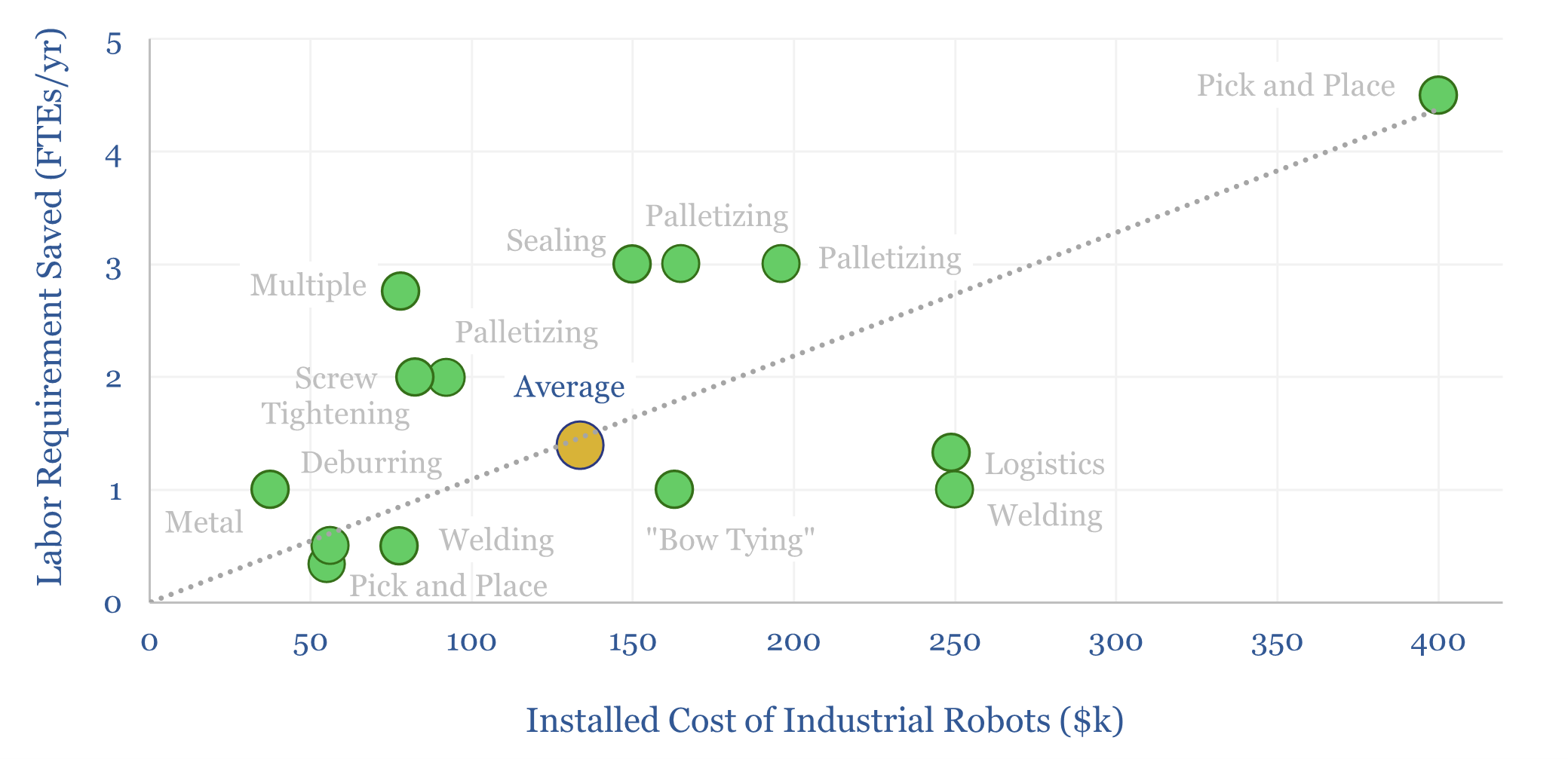5 million industrial robots have now been deployed globally, in an $18bn pa market. But growth could inflect, with the rise of AI, and to solve labor bottlenecks, as strategic value chains are re-shored. Robotics effectively substitute labor inputs for electricity inputs. Hence today’s 18-page report compiles 25 case studies, explores the theme and who benefits?
Tariffs and trade have been the world’s biggest topics in recent months, as forewarned in our outlook note for 2025. One challenge for tariffs is whether it is really possible to re-shore many value chains, where labor costs are a high portion of total costs, and developed world labor rates are 5-10x higher than in the emerging world. Examples range from large power-transformers to auto manufacturing to nitric acid or chlor-alkali, as discussed on pages 2-3.
Industrial robotics help to address shortages of skilled labor, especially on tasks that are particularly repetitive, dangerous or require high precision. An overview of industrial robots, their types and their deployments are given on pages 4-5.
We compiled 25 case studies into the deployment of industrial robots, in order to assess their applications, the advantages, throughputs, defect rates, suitability for “dangerous” tasks, and most importantly their economics, on pages 6-8.
Across our case studies above, the average robot deployment cost $130k and replaced 1.3 net full-time jobs, while also improving throughput and quality. Hence we have constructed an economic model of robotics costs. Costs (in $k pa), IRRs and payback periods are stress-tested on pages 9-10.
The rise of AI is a game-changer for robotics, for the reasons on page 11.
Where this impacts energy markets is that each large industrial robot can consume 10-15MWH pa, depending on its utilization rate. Robots effectively substitute labor (one input) for capex and electricity (two other inputs). Impacts on global electricity demand are predicted on pages 12-13.
A dozen companies are captured in our screen of industrial robotics companies. The space is concentrated, as the top five companies have 60% of the $18bn pa market, and these same companies have 60-70% share in 6-7 axis robots. An overview of global robotics companies is given on pages 14-18.
